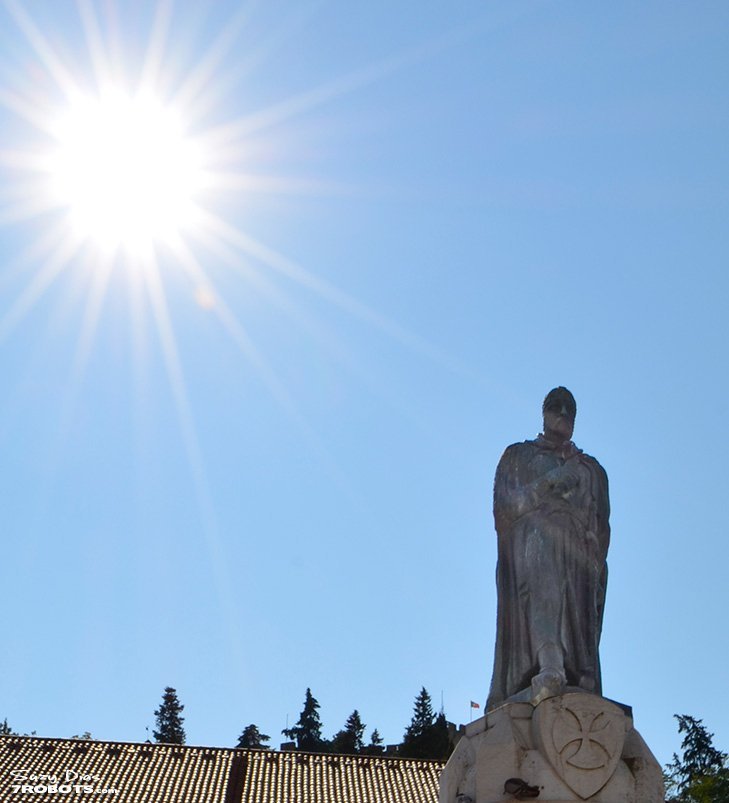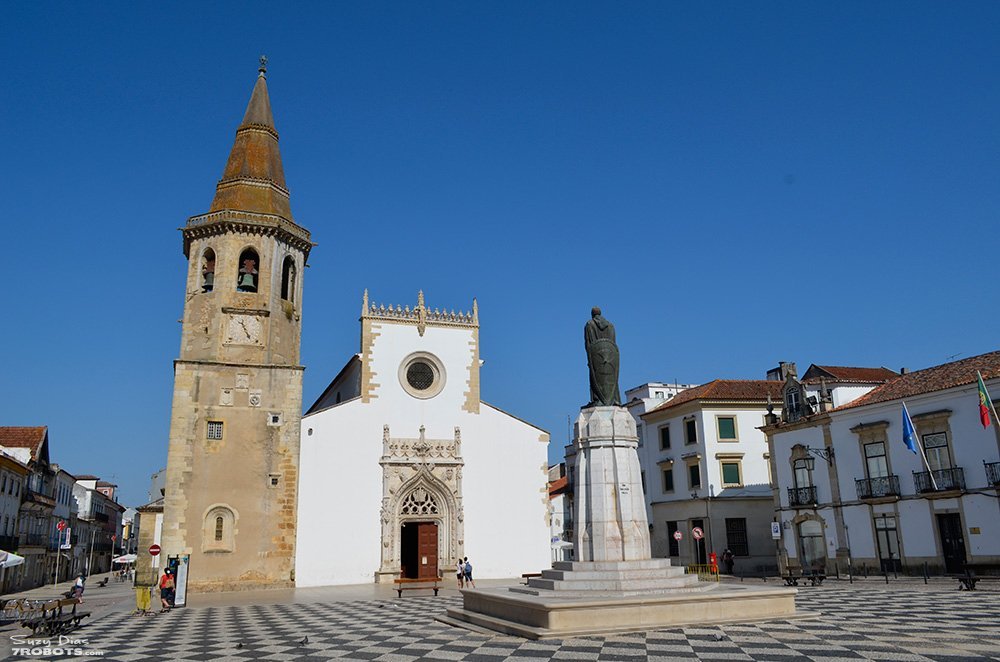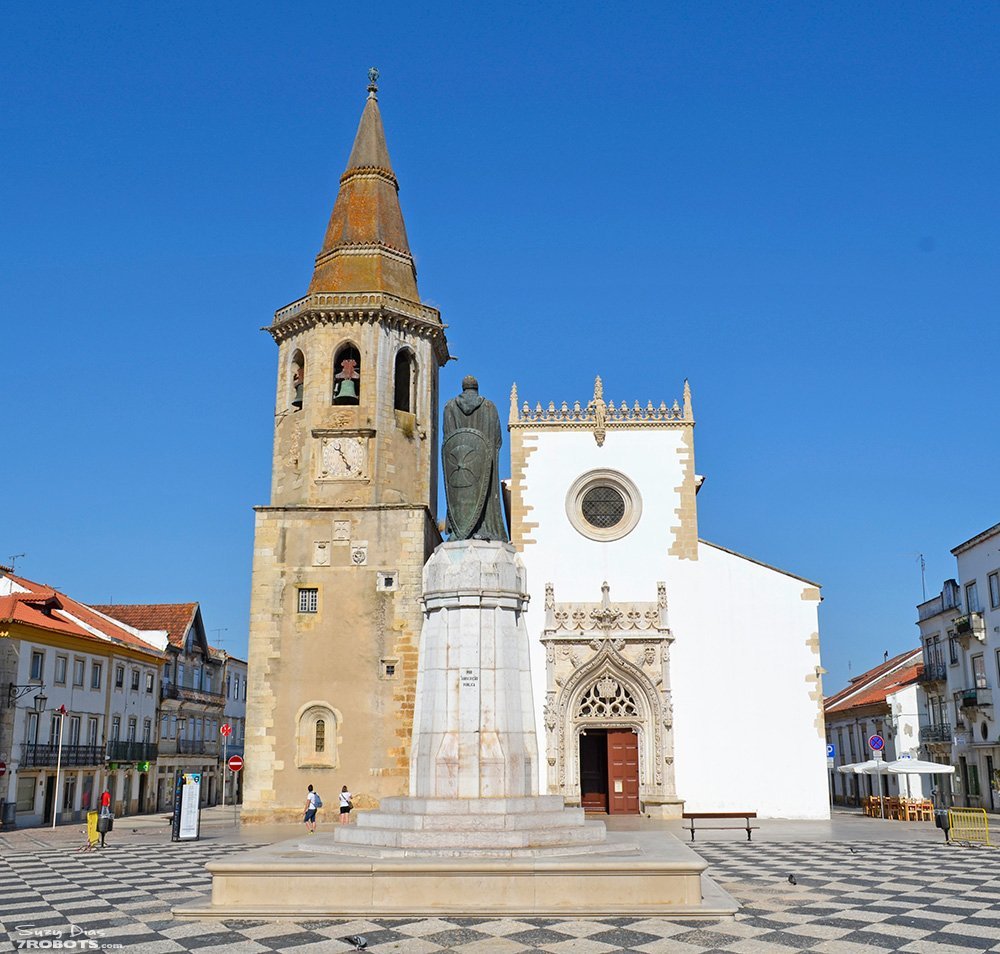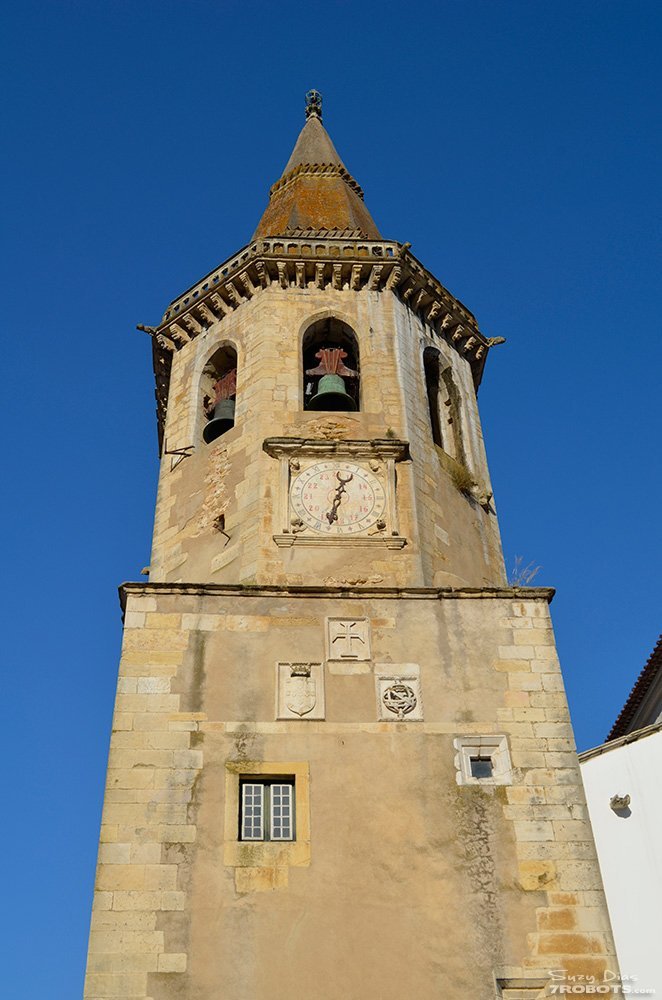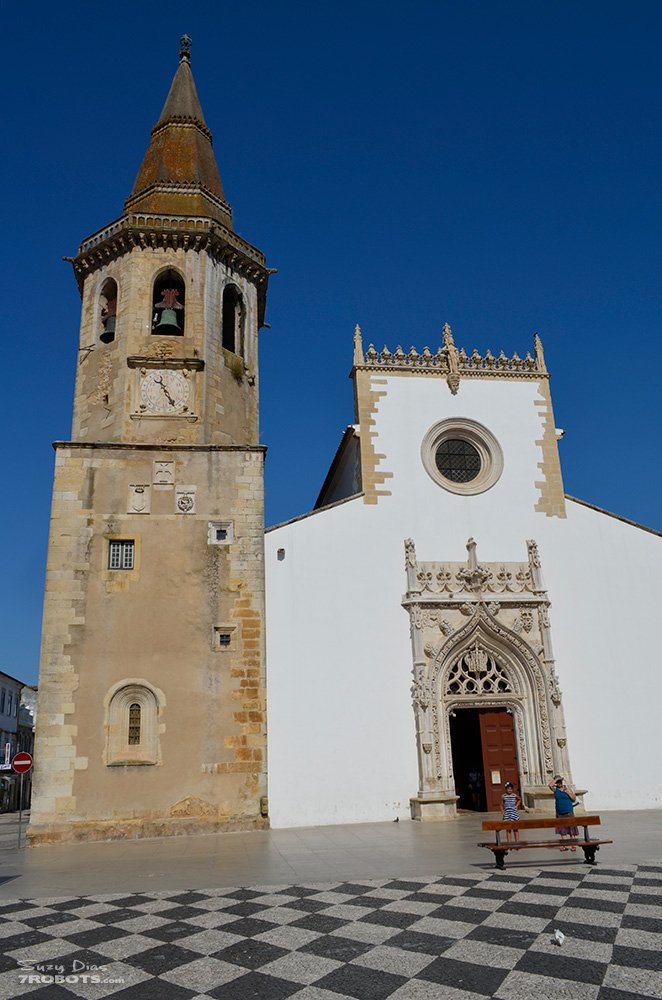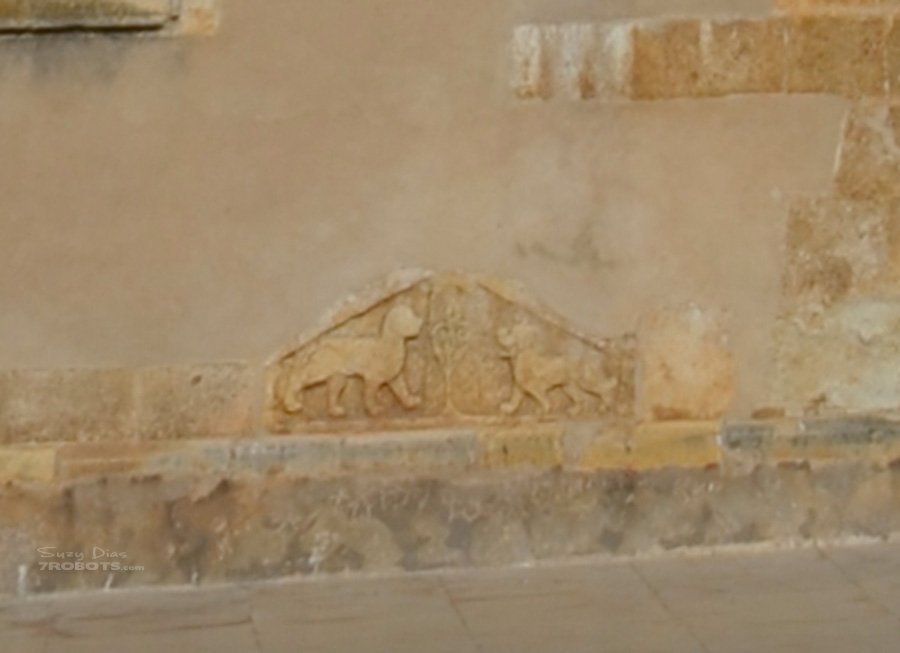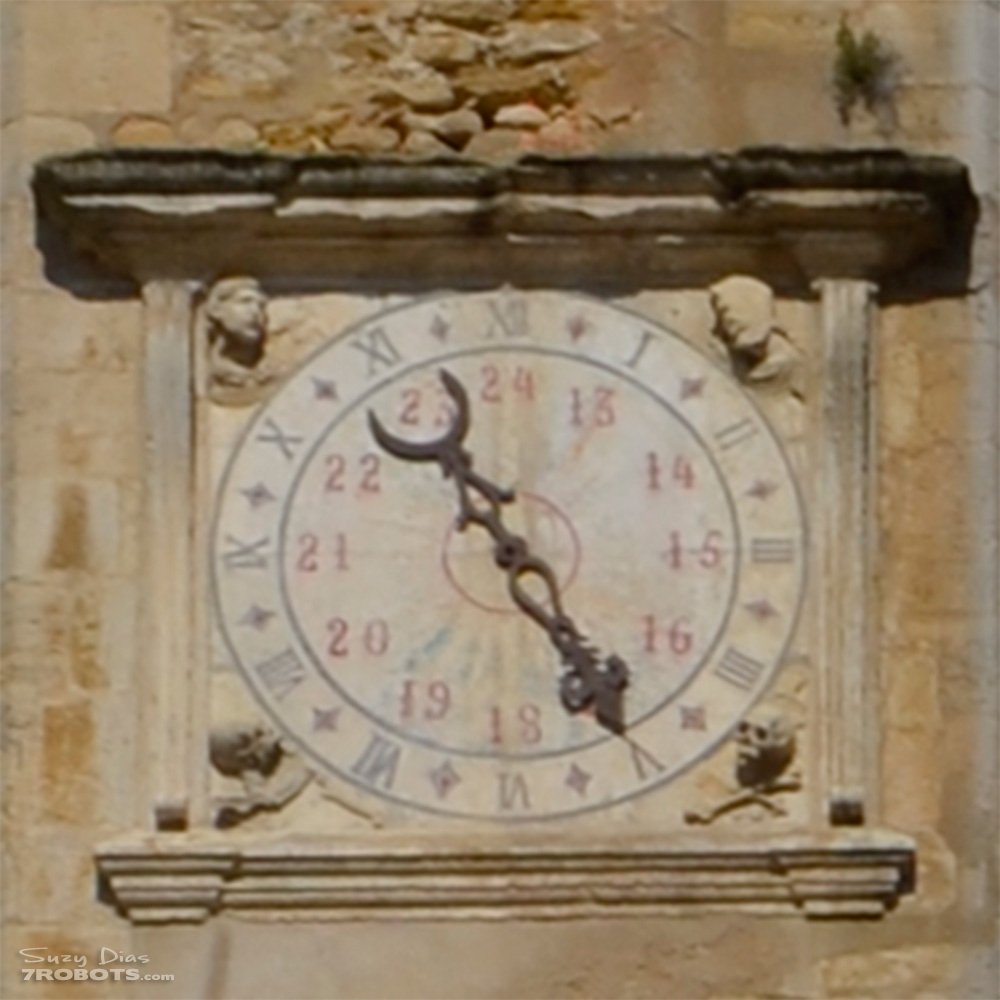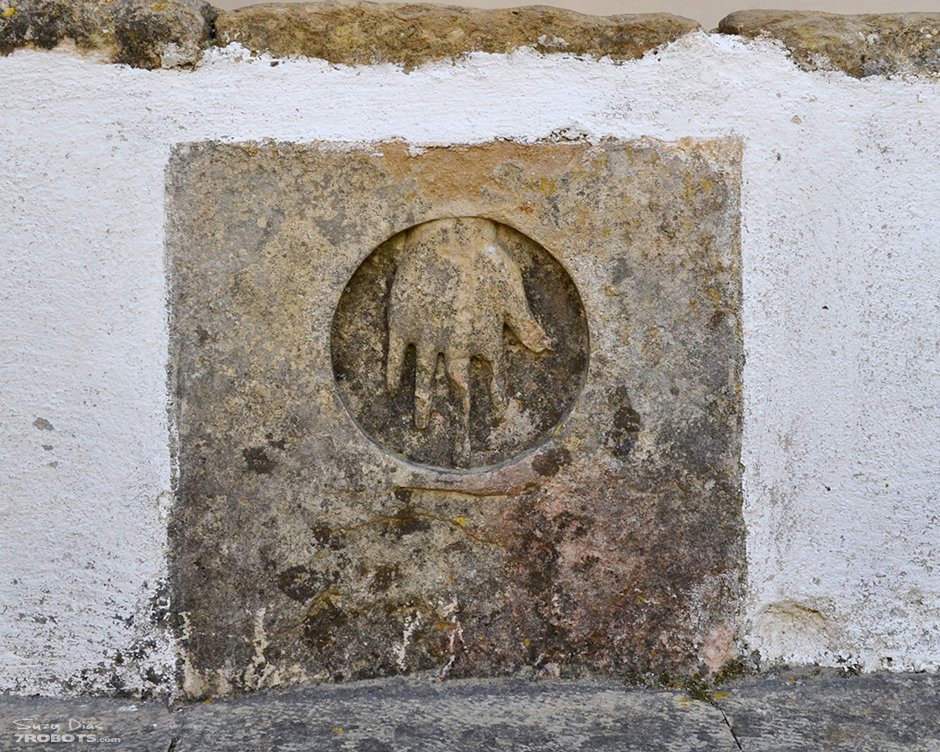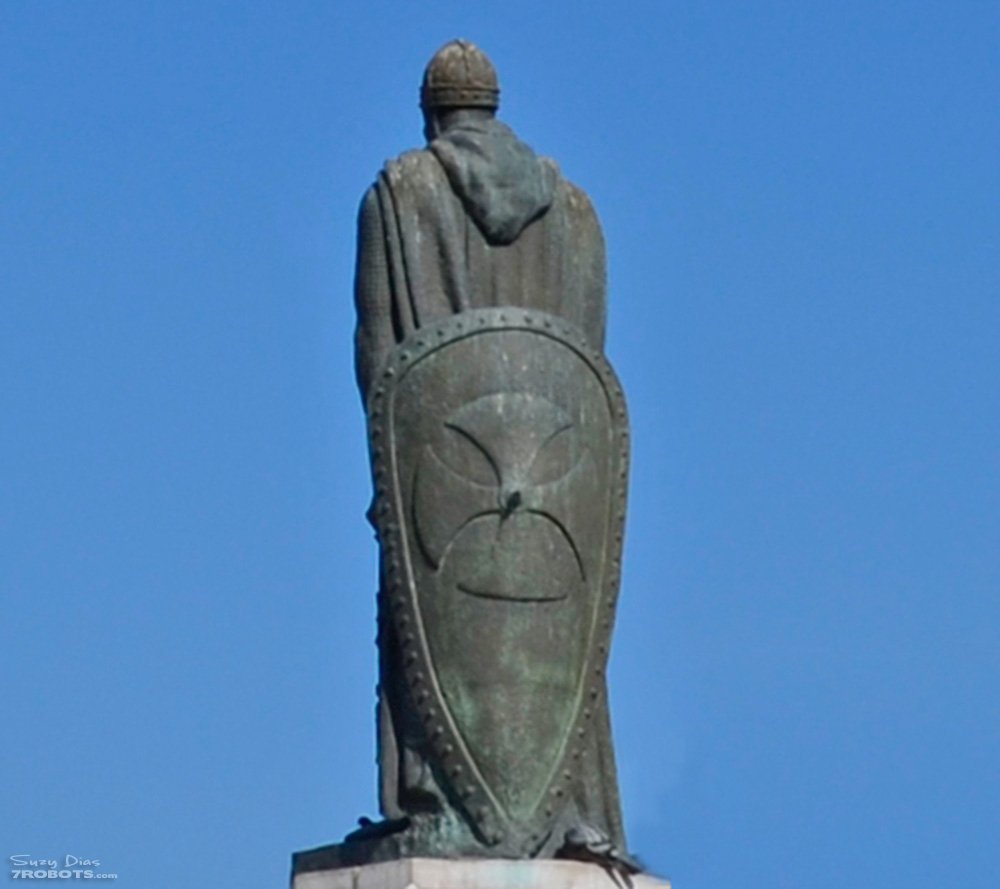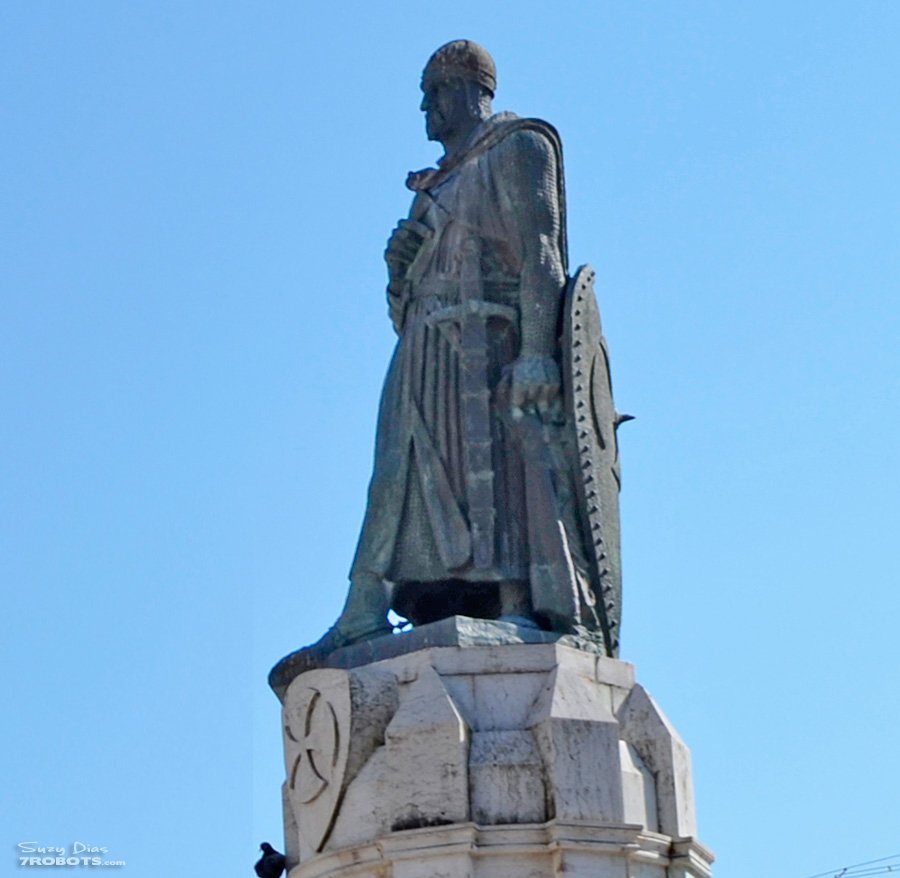Templar Symbols at The Church of St. John Baptist
It’s not often to get to say your city was founded by the Knights Templar in 1118, but Tomar is that exception. A beautiful town with a rich and mysterious history makes it one of my favorite places in Portugal.
★ For more photos and posts on Portugal, including more about Tomar click here.
Praça da República Tomar
The Praça da República (Square of the Republic) is a beautiful spot to sit and enjoy the panorama. It’s surrounded by 17th century architecture, including Tomar’s Town Hall (shown below, behind the statue).
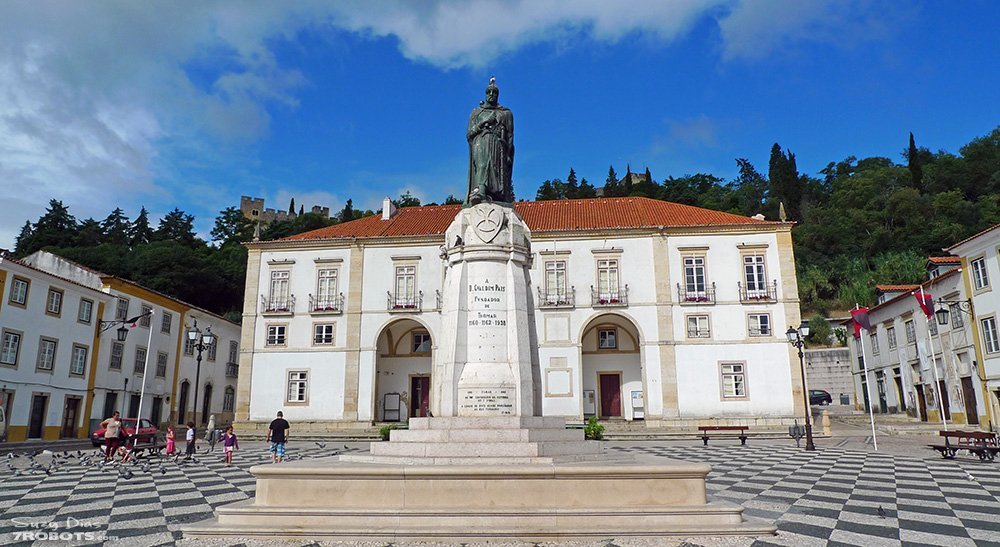
Igreja de São João Baptista
The Praça da República is the main square in Tomar. The Church of St. John Baptist is in the main square of the town. It was built between the 15th and 16th centuries and has many interesting artistic details, like the flamboyant Gothic doorway. The Manueline style clock tower is from the 16th-century. There are also several panels painted by Portugal’s best Renaissance artists, Gregório Lopes in the 1530s.
Both the church and the clock tower were given to Tomar by Manuel I of Portugal, who was also a Grand Master of the Order of Christ.
The Church of Saint John the Baptist (São João Baptista) is in the main square of the town, in front of the Municipality (17th century) and a modern statue of Gualdim Pais. The church was built between the 15th and 16th centuries.” [click to read more].
Templar Symbols in Tomar
Pyramidal stone relief of a dog and a lion
At the bottom right of the clock tower sits a pyramidal stone relief of a dog and a lion which is very weathered by time older than the church itself. The dog could represent Sirius and the lion could represent Regulus. They are separated by a flor-de-lis. Both Sirius and Regulus are associated with ancient knowledge. Some say that this marks an underground passage that leads from the Church of St. John the Baptist to the the Rotunda (chapel) in the Convent of Christ.
According to the Tomar website, there is no doubt that this stone came from the the foot or support of an ancient tomb and was later used in the clock tower [click here to read more].
Tomar Clock tower of the Church of St. John the Baptist
The Manueline clock was taken from the “Sun Gate” (Porta do Sol) of the Templars’ Castle is from the time of D. João III (1523)
Notice the heads in the upper and lower corners of the clock. In the upper corners appear two faces, a man and a woman, while at the bottom are two skulls. These images represent the time that never stops running, between life and death [click here to read more].
Templar hand symbol?
Speaking of the Convent of Christ (Convento de Cristo), I found this symbol of a hand inside one of the cloisters. I’m still researching what it means. If you have any info, I’d love to here it (click here or tweet me @7robotsinc).
Founder of Tomar: Gualdim Pais fourth grand master of the Knights Templar
Gualdim Pais (1118 – 1195) was a Portuguese crusader and the fourth grand master of the Knights Templar. He was in the service of the first King of Portugal, Afonso Henriques. In 1159, after the conquest of the region from the Moors in the Portuguese Reconquista, the land was granted to the Order of the Knights Templar as a fief or fee for services.
Gualdim Pais is the founder of the city of Tomar. In 1160 he began construction of the Convento de Cristo, what would later become the headquarters of the Order or Christ in Portugal.
Templars re-established in Portugal in 14th century
In 1307, Pope Clement V had many of the members of the Knights Templar in France arrested, tortured into giving false confessions, and burned at the stake. King Philip IV of France disbanded the Order in 1312. In 1314, under the pressure from Pope Clement V, the Templars were banned through Europe.
Much of what you may have read about the Knights Templar is focused on France and perhaps the UK, but the last great chapter in their history was written in Portugal.
In 1319, King Dinis of Portugal persuaded Pope John XXII to allow fugitive Templars to join, with their possessions, the newly created Order of Christ.
★ For more photos and posts on Tomar and Portugal, click here.
★ http://www.conventocristo.gov.pt (historical figures involved with the Convent of Christ)
